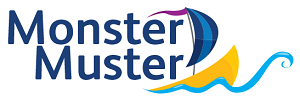5 Supply Chain Strategies that Worked for Retailers this Holiday Season

The holiday season is retailers’ busiest and perhaps most challenging time of year. Increased demand puts pressure on businesses’ inventory, logistical, and customer service capacities. Furthermore, this year’s holiday season was even more difficult with inflation, competitive discounting & supply chain disruptions.
In the past two years (2020–2021), to minimize COVID-19 exposure, more people started buying online, and thus, companies had to make sure their e-commerce sites could manage the extra traffic with proper demand forecasting. Additionally, more online orders strained shipping resources and increased carrier fees.
Here are five ways shops may get ready for the impending holiday season.
Strategies that Were Beneficial for Retailers
1. Utilizing Historical Data and Considering Trends
Even though it might seem obvious, looking at past data from all channels and then taking consumer patterns into account is one of the quickest and most accurate ways of sales and demand forecasting.
Comparing prior trends that a company has encountered with those experienced by the industry helped them forecast sales more accurately.
The following step is to compare this year’s sales data by channel. Say, for instance, that your online sales have increased by 10% on average during the same period last year. Unfortunately, the year-over-year decline in your brick-and-mortar retail sales is 5%. You should keep an eye on such trends over the coming months, average them out, and then incorporate them into your upcoming Christmas sales prediction.
There may not be any historical data available for some firms. This can be the situation for a new company or a seasoned store trying to anticipate sales for a novel product. However, there are ways to predict sales/demand even in these circumstances with the help of sophisticated demand forecasting solution. If a retailer sells a new product A that has similar attributes to product B, then they can compare the sales of product A to those of its comparable product B to estimate the sales/demand as closely as possible. Companies on a regular basis should examine their monthly sales to date and then conduct research to see how the industry’s sales are trending.
2. Consider New Promotions and Marketing Initiatives
Demand forecasting and sales forecasting are two different things. While using past data (quantitative demand forecasting) is a fantastic way to start, there are occasions when you’ll also need to take more qualitative aspects into account. When predicting qualitative demand, one must take into account both upcoming events and external market variables, such as sales offers and competition.
Businesses usually always rely on marketing initiatives to boost sales of their brand and products during the Christmas season when predicting sales.
Thus retailers also need to account for any upcoming deals/promotional offers while planning their sales forecasting strategies. For instance, this holiday season would debut their “flat 50%”” offer. The goal of a free shipping promotion, whether it applied to all items or just specific ones, was to increase conversion rates overall. To help identify the influence on sales, it is a good idea to try offers and promotions before the holidays.
3. Break Forecasts Down by Individual Products
The most efficient way to forecast sales is by individual products/SKU’s, although this can take some time if you are doing it manually. This gives retailers the most accurate prediction for every SKU and helped them organize their inventory and communicate production requirements to their suppliers.
4. Integrating Demand Forecasting Software
Retailers used a variety of demand forecasting software to predict sales. To predict sales throughout the year, these forecasting systems helped include trends, seasonality, the impact of marketing initiatives and promotions, and each product’s current and previous sales levels.
These technologies are frequently present in end-to-end business management software, which links numerous systems, including order management, accounting, fulfillment, and customer relations software. These technologies are frequently necessary for multichannel retailers to expedite the inventory management process and communicate efficiently with internal departments and outside partners.
5. Reviewing Data and Adjusting
It takes time and effort to produce accurate sales forecasts. As a merchant, your goal should be to incorporate as many pertinent factors as you can and improve your forecasting accuracy over time. Comparing your predictions with real sales each month can help you achieve this. Retailers identified the root causes of differences and made the necessary corrections.
As you evaluate the data and make future plans, it is also a brilliant idea to involve representatives from other departments. Sales, marketing, accounting, buying, and IT are all included in this. Considering all cross-departmental activities, doing this will enable more accurate forecasting and ensure everyone is on the same page.
Businesses are better equipped to identify what influenced the data if they have more data, and their assumptions will be more educated and correct.
About the Company
Organizations can produce accurate forecasts by merging past sales data with other elements like seasonality, customer trends, and others using Kronoscope, a robust AI-powered demand forecasting tool from Fountain9, By optimally stocking their inventory while considering the upcoming demand, businesses can lessen the challenge of maintaining huge inventories. The software can determine how much inventory has to be kept on hand to meet demand appropriately, properly estimating demand for each SKU item.






